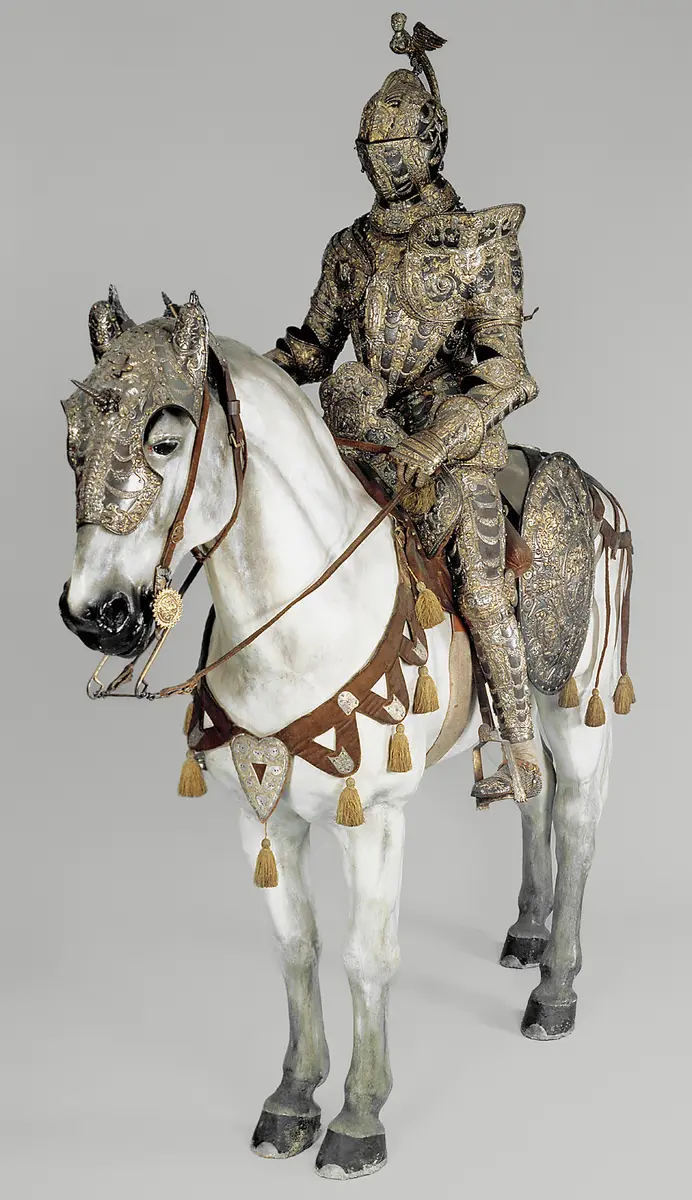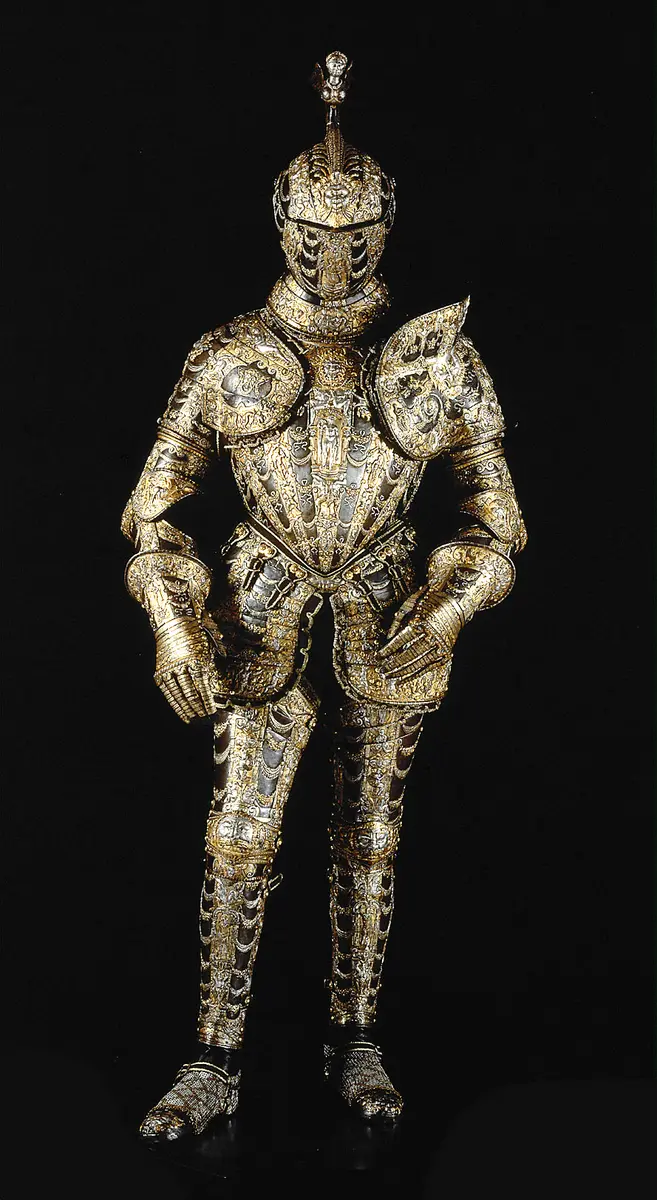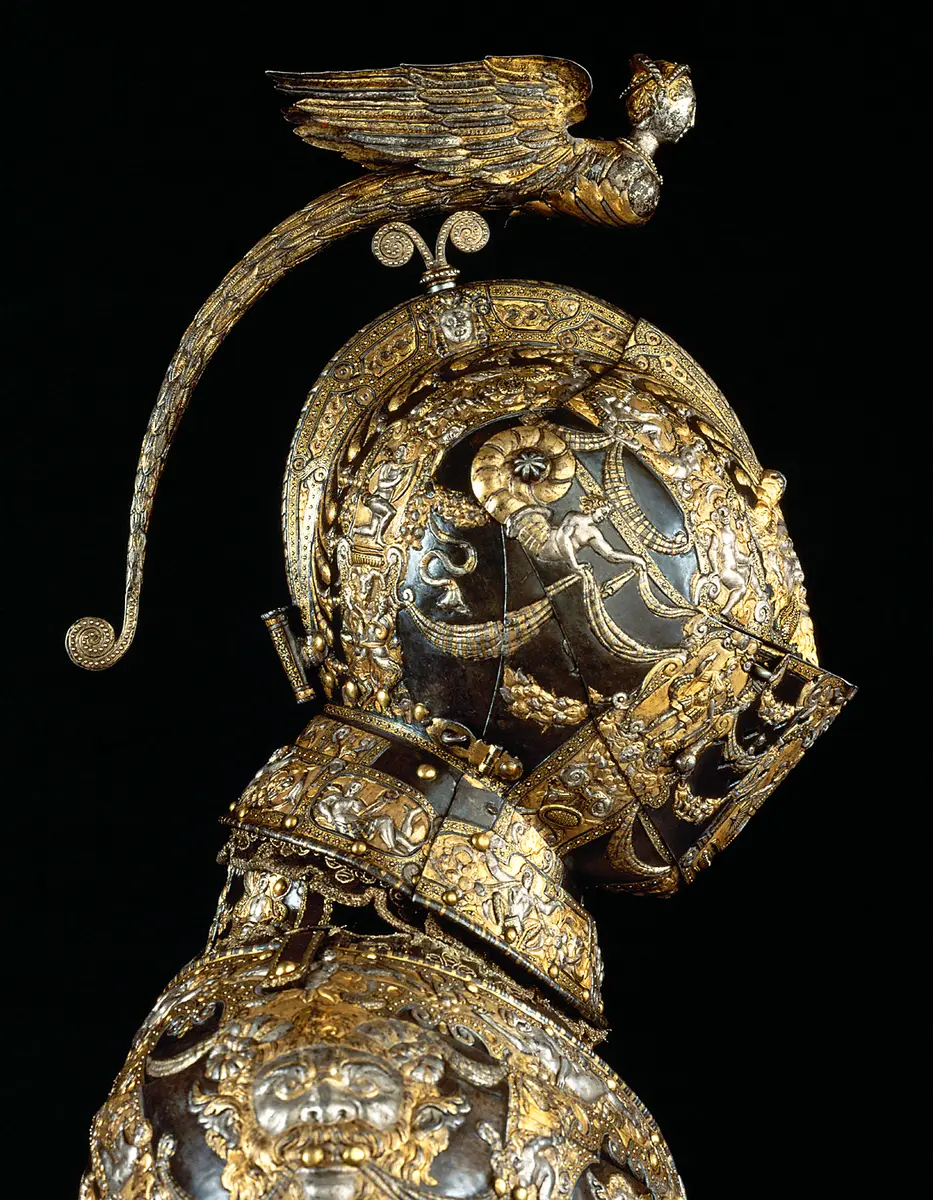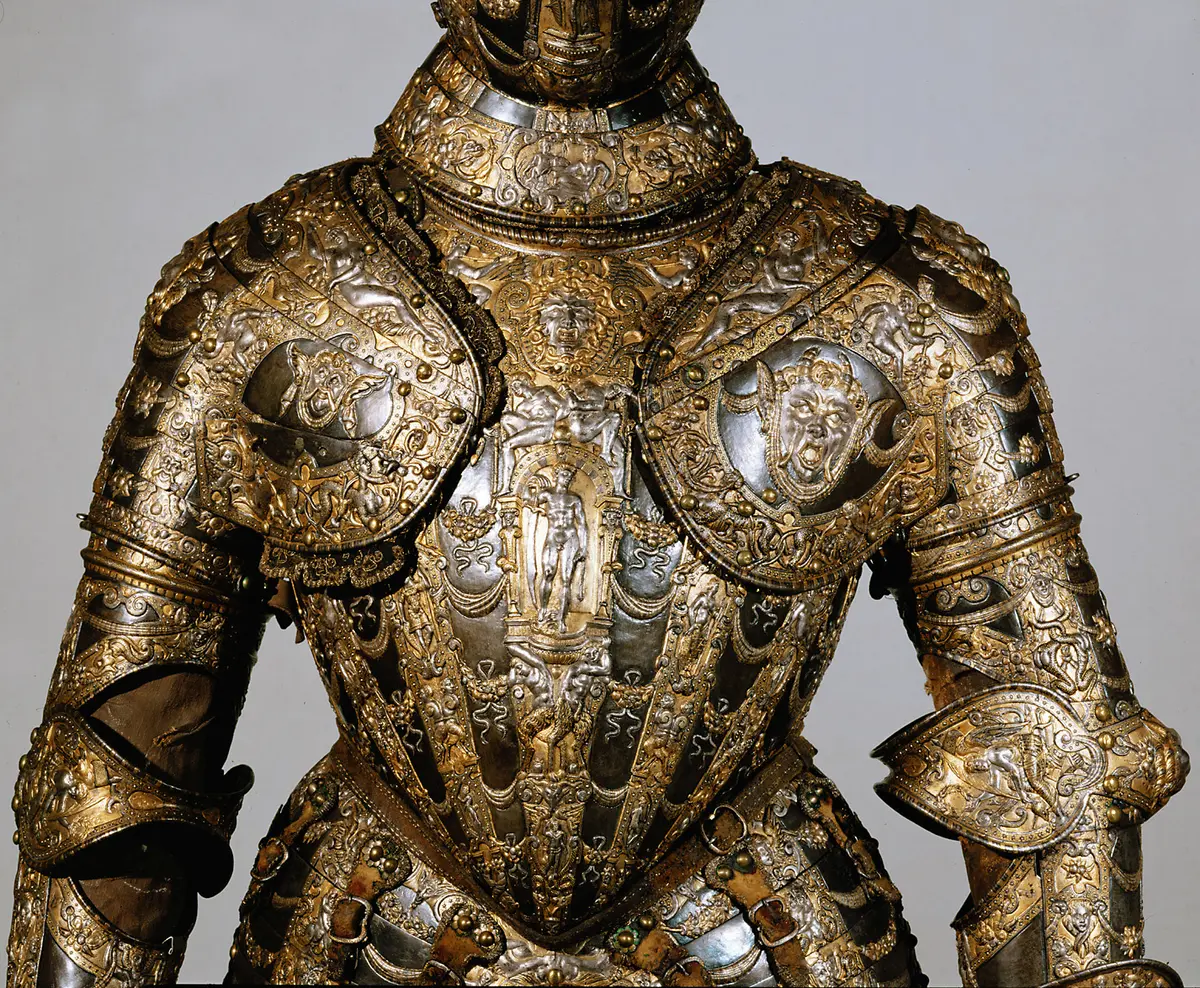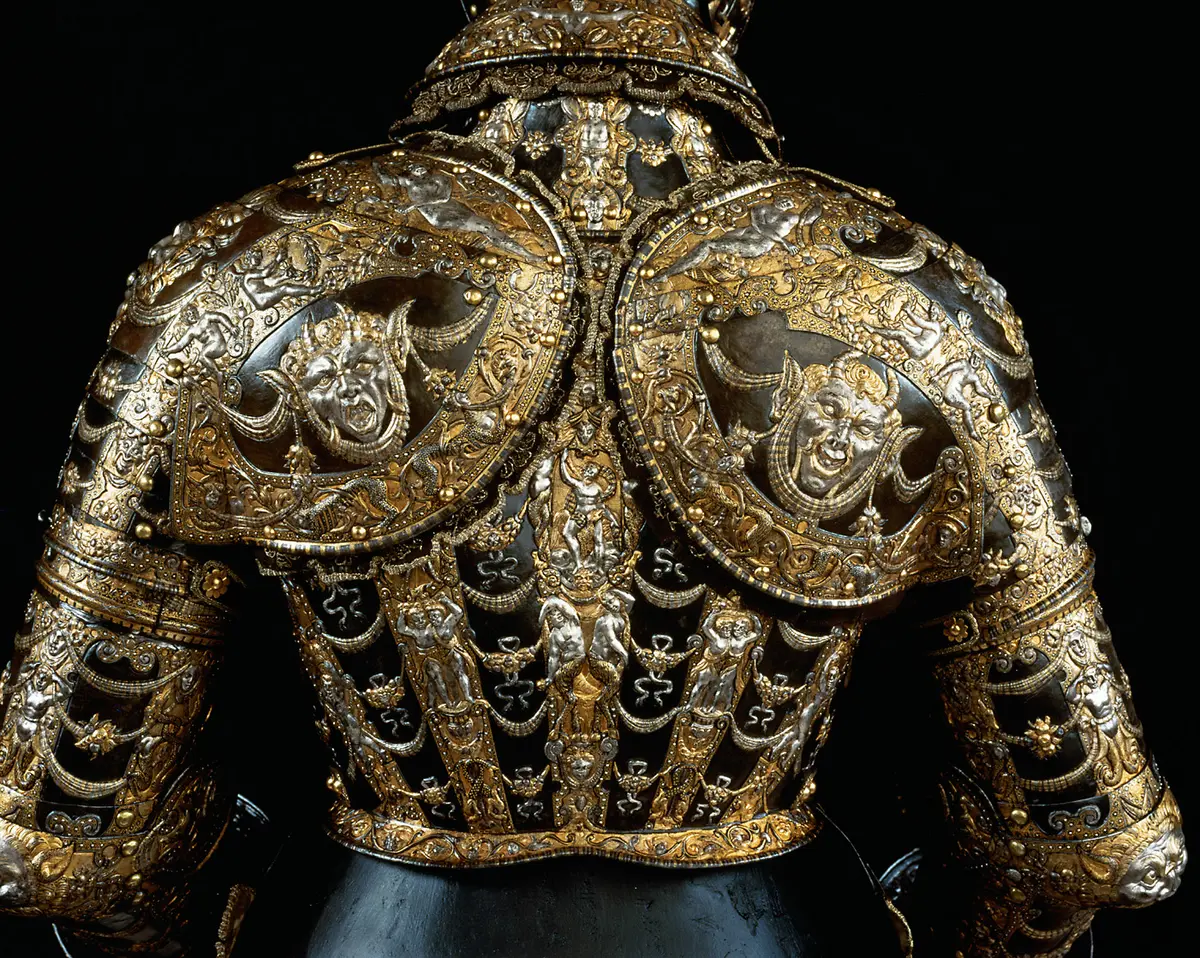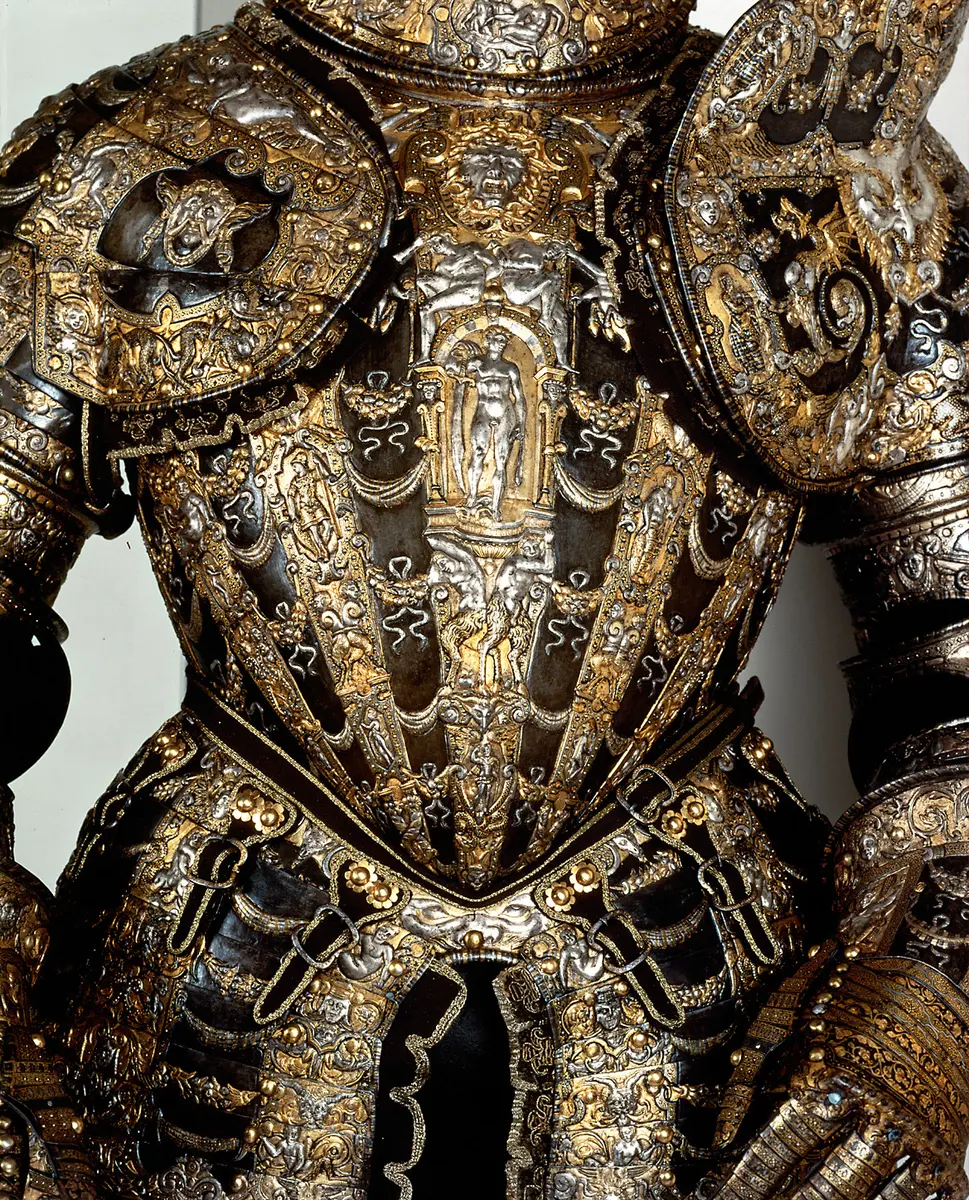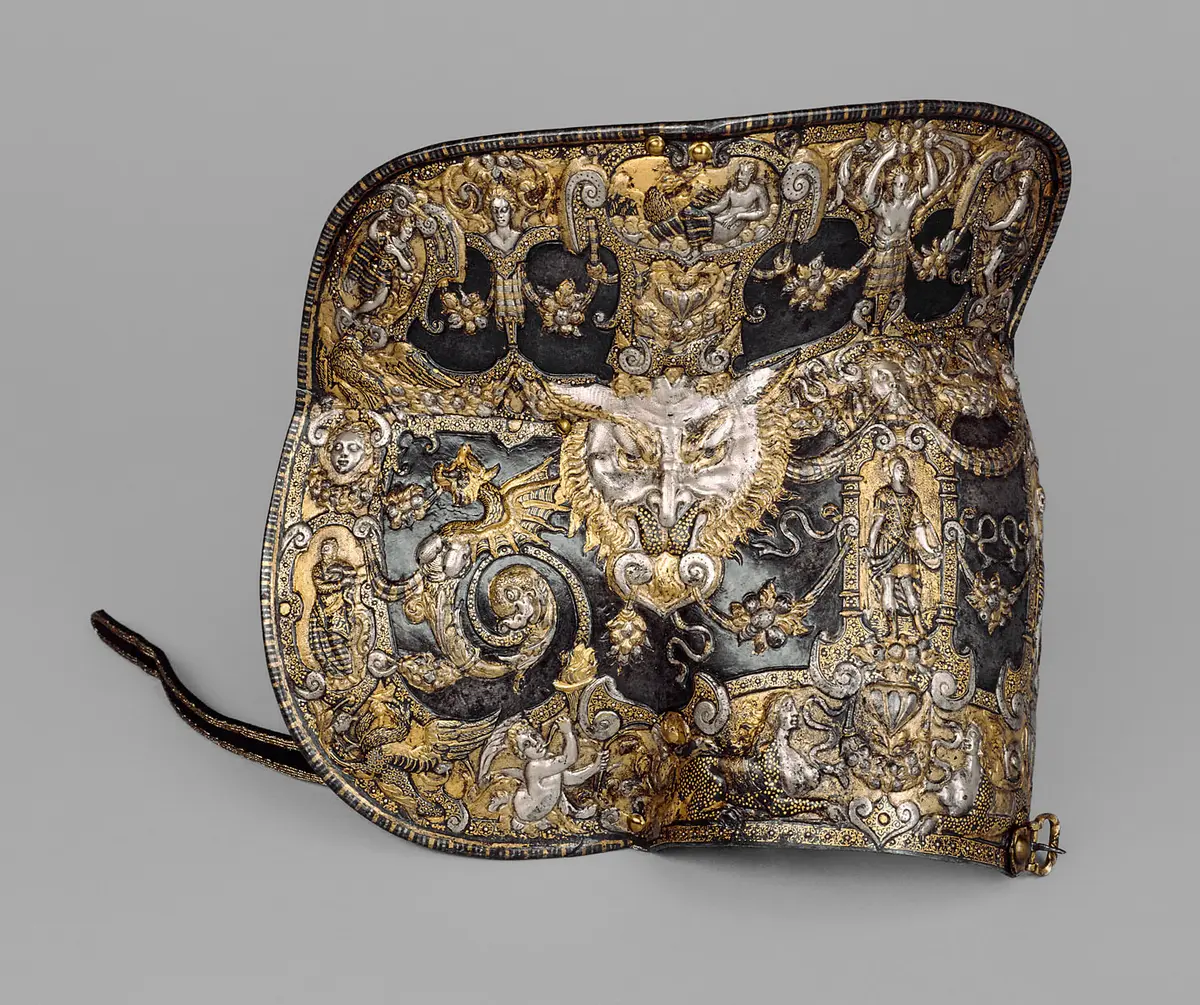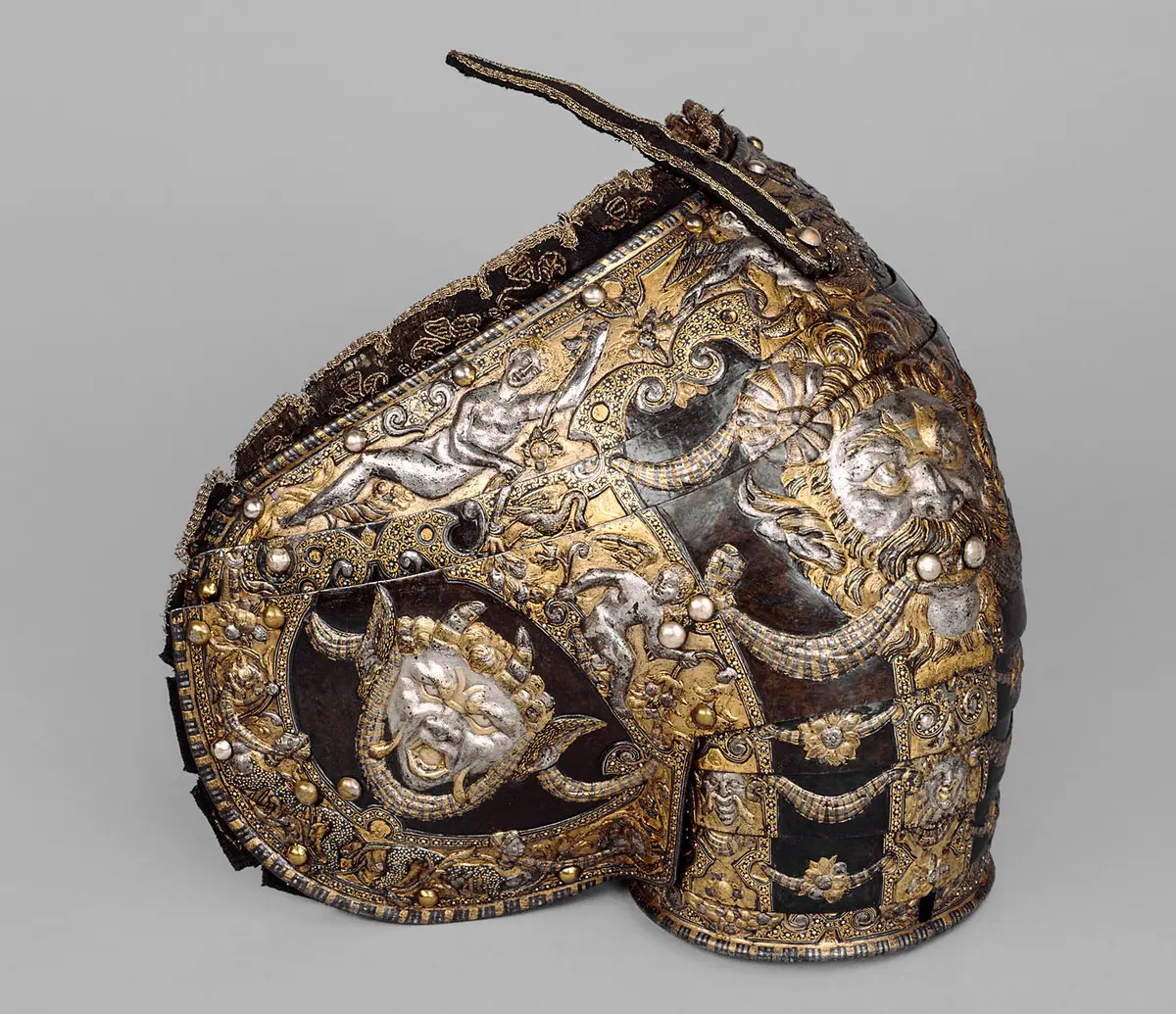Besitzer/in:
Alessandro Farnese Herzog von Parma und Piacenza , Herzog von Parma und Piacenza (1545 - 1592) DNB
Künstler/in:
Lucio Piccinino , (Goldschmied und Treibkünstler), zugeschrieben (um 1575 - 1595, tätig in Mailand) DNB
Entwurf:
Andrea Casalini (Goldschmied) (gestorben 1597, tätig in Parma)
Zeit:
um 1576-1580
Objektbezeichnung:
Harnisch
Kultur:
Mailand
Material/Technik:
Eisen, geschmiedet, getrieben, teils ziseliert, teils gebläut, teils geschwärzt, teils mit Gold, Silber, Silberperlen tauschiert. Schnallen: Eisen. Nietkappen: Messing, teils feuervergoldet. Kettengeflecht aus Eisen und Messing. Leder (teils modern). Textil (Original nur noch in Resten vorhanden): Seide. Samt. Silberlahn, Goldlahn (teils modern).
Sporen: Eisen, geschmiedet, teils geätzt. Ätzdekor: feuervergoldet. Schnalle: Eisen, teils feuervergoldet (fragmentarisch erhalten). Texil (modern).
Maße:
Gesamtmaß Harnisch mit Pferd: H 264 cm × B 92 cm × T 252 cm
Sturmhaube: H 45 cm × B 23 cm × T 39 cm
Bildrecht:
Kunsthistorisches Museum Wien, Hofjagd- und Rüstkammer
Inv. Nr.:
Hofjagd- und Rüstkammer, A 1132
